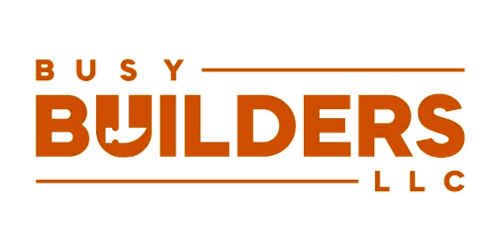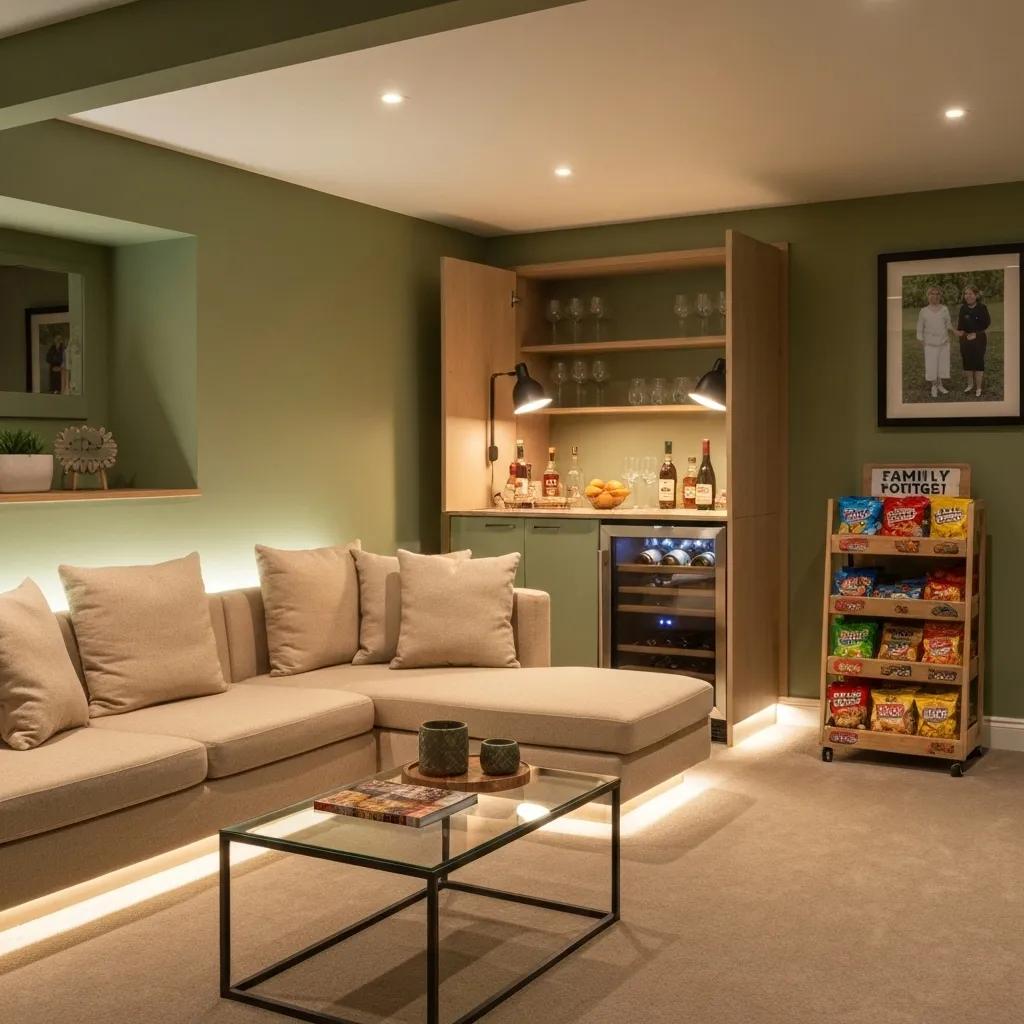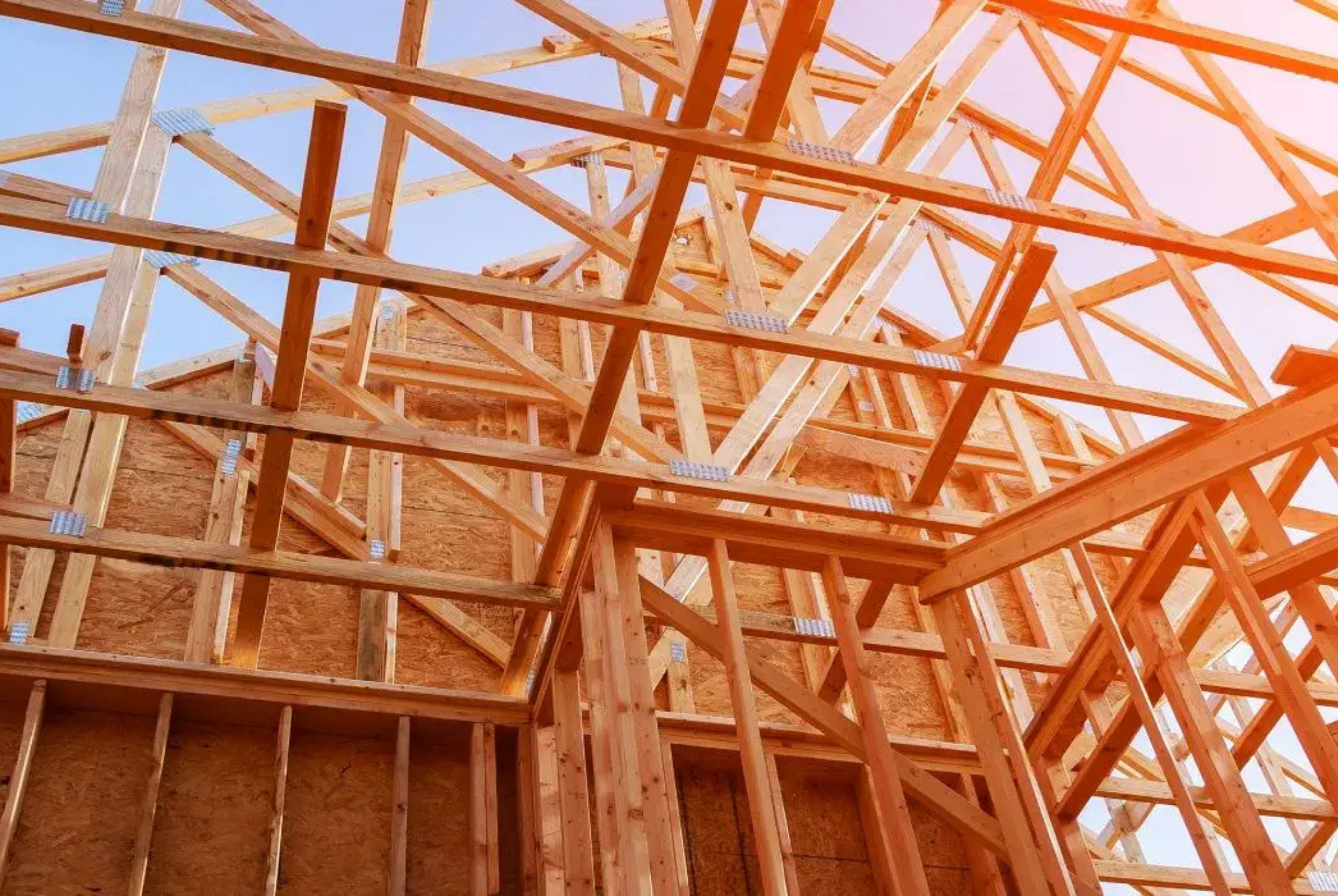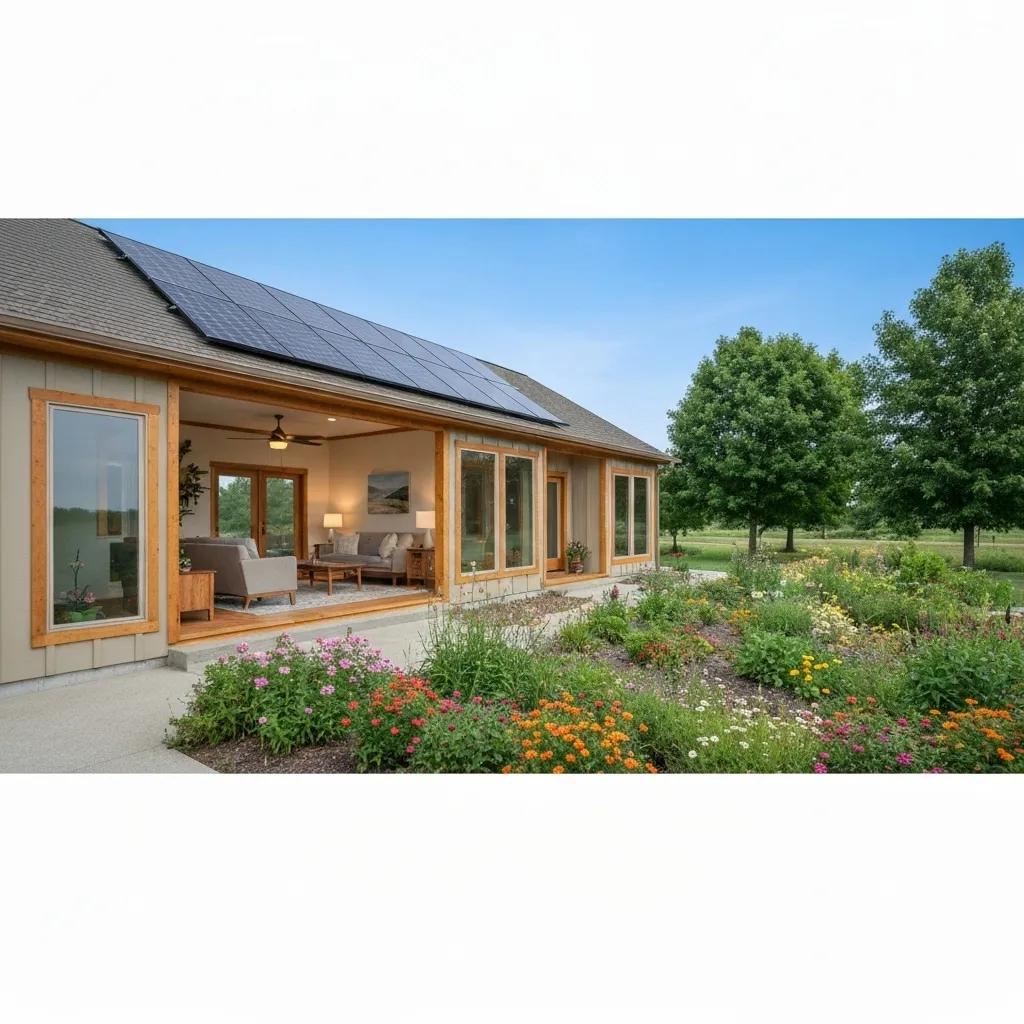
Energy-Efficient Upgrades for Iowa Homeowners: How to Save with Rebates, Audits, and Smart Installations
Iowa homeowners spend an average of 20–30% more on heating and cooling than national peers due to extreme seasonal temperatures. By investing in energy efficient home upgrades in Iowa, you can cut utility bills, boost comfort, and increase property value immediately. This guide explains how rebates and tax credits from federal and state programs, detailed energy audits, and modern installations work together to lower costs and carbon footprints. You’ll learn: energy practices for sustainable homes.
- Which federal and Iowa rebate programs you qualify for
- How high-efficiency HVAC systems, insulation, windows, and doors deliver savings
- The role of professional energy audits and weatherization
- Emerging solar and renewable options for long-term gains
- Answers to common homeowner questions about incentives and payback
At The Busy Builders, our remodeling and new-construction services integrate these upgrades seamlessly into every project. Whether you’re building from the ground up or retrofitting an existing home, you’ll discover actionable strategies for unlocking up to 100% cost coverage on select upgrades and claiming up to 30% in federal tax credits. Read on to map out a clear path for robust energy savings and enhanced comfort throughout Iowa’s shifting climate.
What Iowa Energy Rebates and Tax Credits Can Homeowners Use?
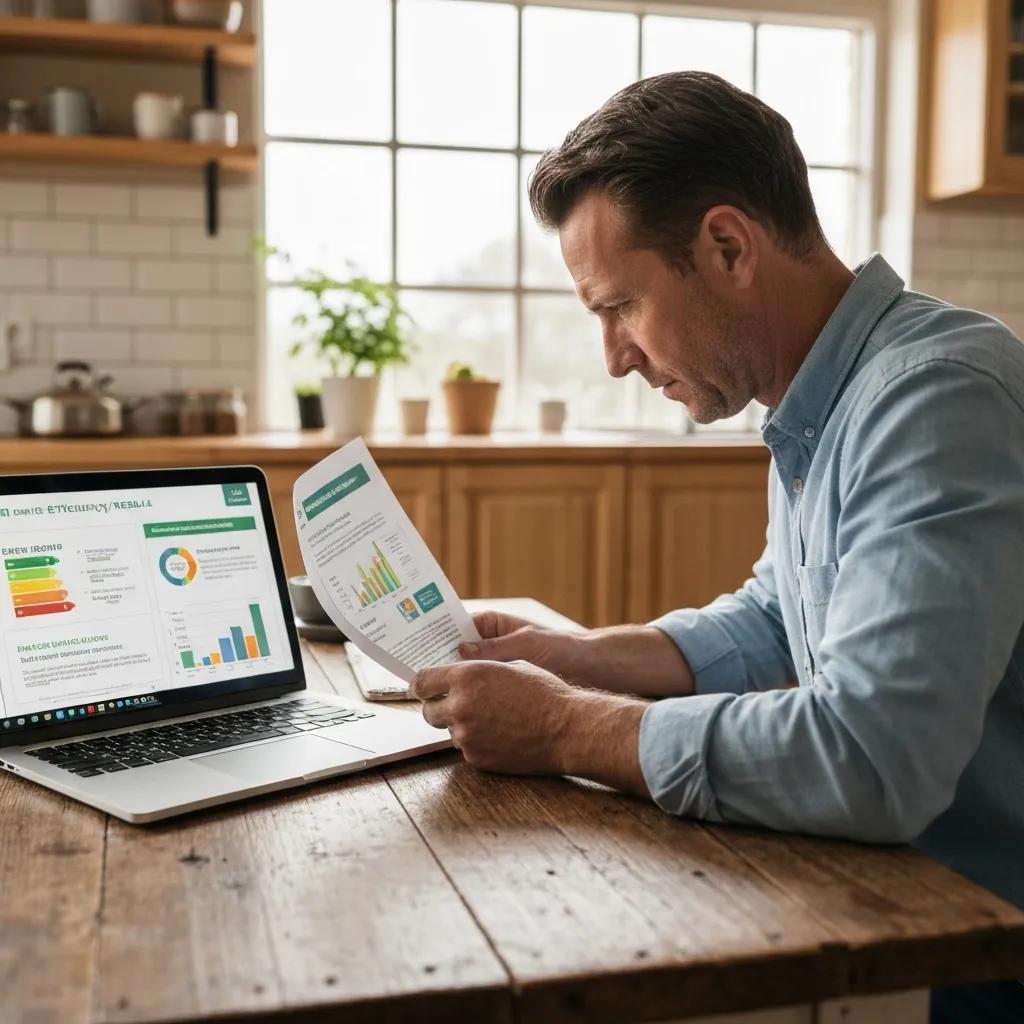
Rebate and tax credit programs reduce out-of-pocket costs for energy efficient upgrades in Iowa by covering part or all of project expenses and lowering federal income tax liability.
How Does the Inflation Reduction Act Benefit Iowa Homeowners?
The Inflation Reduction Act provides up to 30% federal tax credits on qualifying improvements, including insulation, windows, doors, and heat pumps, through 2032.
Key outcomes include:
- 30% credit on insulation and air sealing costs
- $600 cap per year on windows and doors
- Up to $2,000 credit for heat pump installations
These incentives make premium materials and systems accessible, and combining them with point-of-sale rebates can eliminate most upfront expenses. Understanding IRA provisions is the first step toward maximizing savings under both federal and Iowa-specific programs.
Federal and Iowa Home Energy Rebate Programs
The Inflation Reduction Act (IRA) provides federal tax credits of up to 30% for qualifying energy-efficient home improvements, such as insulation, windows, doors, and heat pumps, available through 2032. Iowa is also set to receive substantial funding for the Home Electrification and Appliance Rebates (HEAR) and Home Efficiency Rebates (HER) programs, which will offer point-of-sale discounts, with higher coverage for low- and moderate-income households.
This research verifies the availability and scope of federal tax credits under the Inflation Reduction Act and the upcoming state-level HEAR and HER rebate programs in Iowa, directly supporting the article’s claims about financial incentives for homeowners.
What State and Utility Rebate Programs Are Available in Iowa?
Iowa’s Home Electrification and Appliance Rebates (HEAR) and Home Efficiency Rebates (HER) programs offer point-of-sale discounts. MidAmerican Energy, Alliant Energy, and Black Hills Energy provide additional rebates on qualified equipment.
| Program | Covered Upgrades | Maximum Incentive | Administered By |
|---|---|---|---|
| HEAR (formerly HEEHRA) | Heat pumps, electric appliances | Up to $8,000 per home | Iowa Energy Office |
| HER (HOMES) | Insulation, air sealing, windows | Up to $5,000 per home | Iowa Energy Office |
| MidAmerican Energy Efficiency Rebates | HVAC, insulation, thermostats | Varies by upgrade | MidAmerican Energy |
| Alliant Energy Efficiency Rewards | Windows, doors, insulation, appliances | $50–$1,500 per measure | Alliant Energy |
These point-of-sale rebates reduce sticker prices immediately, and pairing them with tax credits drives down net costs to a fraction of market rates. Combining programs ensures homeowners reap maximum benefit from layered incentives.
Who Is Eligible for Iowa Energy Efficiency Rebates and Tax Credits?
Eligibility hinges on income, home type, and project scope:
- Low- and moderate-income households (up to 150% of area median income) may receive 100% rebate coverage under HEAR/HOMES.
- Standard homeowners qualify for up to 50% coverage.
- Projects must meet ENERGY STAR or DOE specifications.
Meeting these criteria streamlines application approvals and unlocks the highest rebate levels.
How Do You Apply for Iowa Energy Rebates and Tax Credits?
Applications for HEAR and HER begin online via the Iowa Energy Office portal when funds open. Required documentation includes:
- Proof of homeownership and income level
- Contractor invoices specifying ENERGY STAR-rated equipment
- Completed project summaries with efficiency metrics
- IRS Form 5695 for federal tax credits
Submission deadlines align with funding windows—monitor state announcements for opening dates. Early preparation and accurate paperwork accelerate reimbursements and credit claims.
Seamless rebate processing and knowledgeable guidance ensure homeowners complete upgrades confidently and cost-effectively, leading naturally into the upgrades themselves.
How Can High-Efficiency HVAC Systems Save Iowa Homeowners Energy and Money?
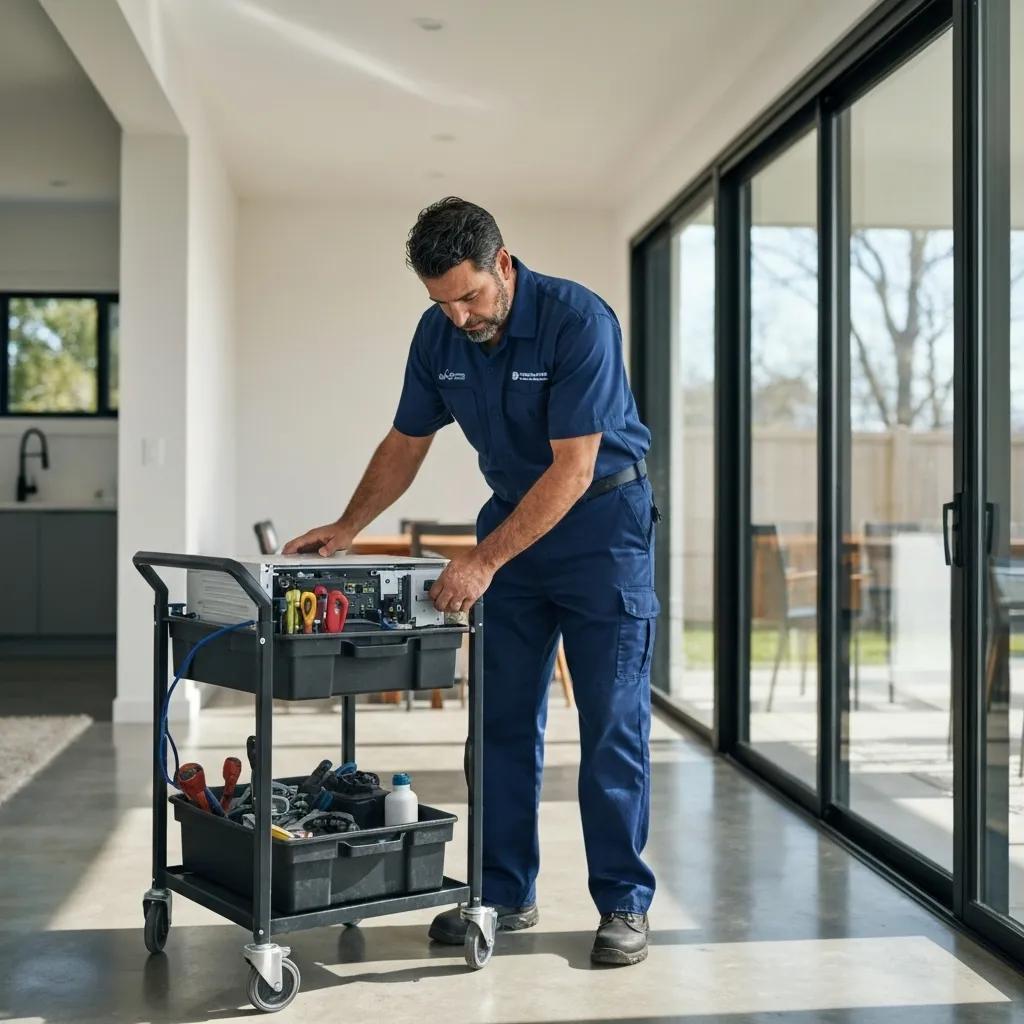
High-efficiency HVAC systems optimize energy use by adjusting output precisely and recovering waste heat, reducing annual heating and cooling expenses by up to 50%.
What Are the Benefits of Air-Source Heat Pumps in Iowa Homes?
Air-source heat pumps transfer outdoor heat indoors even at low temperatures, providing both heating and cooling with SEER2 ratings above 20.
- 30–50% lower energy bills versus electric furnaces
- Year-round comfort with rapid temperature modulation
- Federal tax credit up to $2,000 and point-of-sale rebates
Their dual-mode operation and advanced inverter technology deliver reliable performance through Iowa’s frigid winters and humid summers.
How Do Geothermal Heat Pump Systems Work and Save Energy?
Geothermal systems circulate fluid through buried loops to tap stable ground temperatures, then concentrate that energy for home comfort.
- 40–60% energy savings compared to conventional HVAC
- Lifespan exceeding 25 years for ground loops
- Federal tax credit covering 30% of installation costs
- Lower maintenance requirements due to protected underground components
Investing in geothermal offers consistent savings and qualifies for the highest federal incentives.
What Are the Advantages of Installing Smart Thermostats in Iowa?
Smart thermostats learn usage patterns, adjust settings automatically, and can reduce HVAC runtime by up to 12%. Benefits include:
- Remote control and real-time energy reporting
- Integration with zone control for balanced comfort
- Utility rebates up to $75 per unit
- Eligibility for federal tax credits when paired with qualifying systems
These devices bridge homeowner behavior and system efficiency, ensuring peak performance at minimal cost.
Which Heat Pump Models Qualify for Iowa Rebates and Tax Credits?
Below is a comparison of popular ENERGY STAR-certified models that meet Iowa program requirements: top energy practices for sustainable homes in iowa explained
| Model | Type | SEER2 / HSPF | Federal Tax Credit | State Rebate Availability |
|---|---|---|---|---|
| Model A (Brand X) | Air-Source | 22 / 10 | $2,000 | HEAR, MidAmerican |
| Model B (Brand Y) | Geothermal | 30 / 15 | $5,000+ | HER, Alliant Energy |
| Model C (Brand Z) | Air-Source | 20 / 11 | $1,600 | HEAR, Black Hills |
Selecting certified equipment ensures eligibility and maximizes combined incentives, guiding homeowners toward best-value solutions. Next, discover insulation upgrades tailored to Iowa’s climate.
What Are the Best Home Insulation Upgrades for Iowa’s Climate?
Proper insulation seals thermal envelopes, maintains indoor comfort, and can slash heating costs by up to 20% in Iowa homes.
How Does Attic Insulation Improve Energy Efficiency in Iowa Homes?
Attic insulation with an R-value of R-49 or higher reduces conductive heat loss through roof assemblies. Blow-in cellulose and spray foam options:
- Reduce attic heat gain in summer by blocking solar transfer
- Retain winter warmth by sealing leaks at eaves and penetrations
- Qualify for 30% federal tax credit and HER rebates
By upgrading attic insulation, homeowners stabilize indoor temperatures and lower utility loads during temperature extremes.
What Are the Options for Wall and Crawl Space Insulation in Iowa?
Walls and crawl spaces benefit from materials that resist air infiltration and moisture: your guide to home building materials options in iowa
- Spray foam (closed-cell) delivers R-6 per inch and seals gaps
- Cellulose (blown-in) provides R-3.5 per inch and eco-friendly composition
- Fiberglass batts offer R-3.7 per inch at lower cost
Matching material to space and moisture conditions is key to long-term performance and rebate eligibility.
How Does Air Sealing and Weatherization Reduce Energy Loss?
Air sealing targets the cracks and junctions where conditioned air escapes. Techniques include: energy practices for sustainable homes.
- Conducting blower door tests to pinpoint leaks
- Applying spray foam and caulks at rim joists and duct penetrations
- Installing weather-stripping around doors and windows
These measures complement insulation upgrades by preventing convective loss, together achieving up to 30% total energy savings.
What Are the Costs and Benefits of Professional Insulation Services in Iowa?
Professional crews assess existing conditions, recommend tailored solutions, and handle installation efficiently. Returns include:
- Rapid ROI with average payback under 5 years
- Extended equipment life due to reduced system cycling
- Quality assurance through BPI-certified auditors
- Access to bundled rebate packages for combined air sealing and insulation
Partnering with specialists ensures optimal performance and full incentive capture before moving on to window and door upgrades.
Why Are Home Energy Audits Essential for Iowa Homeowners?
A professional home energy audit identifies hidden inefficiencies, prioritizes upgrades, and guides homeowners toward the most cost-effective measures.
What Does a Free Home Energy Audit in Iowa Include?
Free audits typically offer:
- Blower door testing to measure envelope leakage
- Thermal imaging scans to locate insulation gaps
- Duct leakage assessments for forced-air systems
- Customized upgrade reports and cost-benefit analyses
These free services reveal where to focus improvements, enabling targeted investments for maximum impact.
Importance of Home Energy Audits and Insulation Standards in Iowa
Free comprehensive home energy audits are available to income-qualifying households in Iowa through programs like Green Iowa AmeriCorps and local energy districts. These audits utilize diagnostic tools such as blower door tests and thermal imaging to pinpoint areas of energy loss. For optimal energy efficiency in Iowa’s climate, recommended attic insulation levels typically range from R-49 to R-60.
This information confirms the availability of free energy audits and the recommended insulation R-values for Iowa homes, reinforcing the article’s advice on identifying and addressing energy inefficiencies.
How Do Blower Door Testing and Thermal Imaging Identify Energy Loss?
Blower door testing depressurizes the home to detect infiltration sites, while infrared cameras highlight temperature differentials on walls and ceilings. This diagnostic duo:
- Pinpoints infiltration at doors, windows, and penetrations
- Reveals insulation voids behind finished surfaces
- Quantifies leakage rates to measure improvement progress
Understanding these loss patterns leads directly into choosing the right upgrades.
How Can Audit Results Guide Effective Energy-Efficient Upgrades?
Audit reports rank measures by cost per unit of energy saved, showing which projects deliver the fastest payback.
- Prioritize air sealing before adding insulation
- Replace ductwork or service HVAC systems for better distribution
- Bundle window and door replacements with higher-priority envelope fixes
This prioritized roadmap ensures every dollar spent maximizes energy savings and incentive capture, paving the way for renewable energy integration.
What Renewable Energy Solutions Are Available for Iowa Homes?
Renewable technologies harness free resources to supply on-site generation that offsets grid consumption and drives long-term savings.
How Does Residential Solar Panel Installation Work in Iowa?
Photovoltaic arrays convert sunlight into electricity via semiconductor cells. Installation steps include:
- Site assessment for roof orientation and shading
- System design and permitting
- Panel and inverter installation
- Grid interconnection and commissioning
Owners typically see annual energy production equal to 70–100% of consumption, depending on system size and orientation, and benefit from net metering credits on utility bills.
What Solar Incentives and Net Metering Programs Exist in Iowa?
Iowa homeowners enjoy:
- 30% federal solar tax credit on system costs
- State-level rebates through select utilities
- Net metering credits at retail rate for excess generation
- Accelerated depreciation for small business owners
These combined incentives shorten payback to 8–12 years and support stronger returns on solar investments.
Federal Solar Investment Tax Credit for Iowa Residents
Homeowners in Iowa who install residential solar panel systems are eligible for the federal Solar Investment Tax Credit (ITC), which allows them to claim 30% of the total system cost as a tax credit. This significant incentive, extended by the Inflation Reduction Act, is available through 2032 and helps reduce the upfront financial burden of adopting solar energy.
This research directly supports the article’s discussion of federal incentives for solar panel installation, confirming the 30% tax credit and its extension under the Inflation Reduction Act.
How Do Solar Panels Increase Property Value and Reduce Bills?
Homes with solar installations often appraise at 3–4% higher values, reflecting future energy cost savings. Panels:
- Lock in lower energy rates for decades
- Protect against utility price inflation
- Enhance marketability to eco-conscious buyers
This long-term advantage pairs well with efficiency upgrades to create a truly green, cost-effective home.
What Are Common Questions About Energy-Efficient Upgrades for Iowa Homeowners?
Many homeowners wonder about incentives, audit availability, and savings estimates when planning energy improvements.
What Energy-Efficient Upgrades Qualify for Tax Credits in Iowa?
Upgrades such as insulation, air sealing, efficient windows and doors, and heat pump installations qualify for a 30% federal tax credit through 2032, with additional state rebates covering 50–100% of project costs for eligible income levels.
Are There Free Home Energy Audits Available in Iowa?
Yes, programs through Green Iowa AmeriCorps and local utility partnerships offer no-cost audits that include blower door testing, thermal imaging, and a tailored upgrade plan to guide cost-effective improvements.
How Much Can I Save with Energy-Efficient Windows in Iowa?
Upgrading to ENERGY STAR certified, Low-E windows reduces annual heating and cooling costs by 12–33%, with combined federal and state incentives lowering net cost to $200–$500 per unit and payback periods under 10 years. top energy practices for sustainable homes
What Is the Inflation Reduction Act and How Does It Affect Iowa Homeowners?
The Inflation Reduction Act allocates federal funding for home energy tax credits and rebates, enabling 30% credits on qualified upgrades and point-of-sale rebates through HEAR and HER programs administered by the Iowa Energy Office.
Upgrading to energy-efficient systems—backed by federal tax credits, state rebates, and utility incentives—transforms Iowa homes into comfortable, cost-effective living spaces. Strategic audits guide targeted improvements, while modern HVAC, insulation, windows, and solar solutions deliver lasting energy savings. Partner with The Busy Builders to navigate complex incentives and integrate these upgrades seamlessly into your next remodeling or construction project. Enhanced comfort, lower bills, and increased home value await—start your energy-efficient upgrade journey today.
Frequently Asked Questions
What types of renewable energy solutions are available for Iowa homeowners?
Iowa homeowners can explore several renewable energy solutions, including solar panels, wind turbines, and geothermal systems. Solar panels convert sunlight into electricity, while wind turbines harness wind energy. Geothermal systems utilize the earth’s stable temperatures for heating and cooling. Each option offers unique benefits, such as reduced utility bills and increased property value, and may qualify for federal and state incentives, making them financially attractive for homeowners looking to enhance energy efficiency.
How can homeowners find qualified contractors for energy-efficient upgrades?
Homeowners can find qualified contractors for energy-efficient upgrades by checking local directories, seeking recommendations from friends or family, and consulting resources like the Iowa Energy Office or ENERGY STAR’s website. It’s essential to look for contractors with certifications, such as BPI (Building Performance Institute) or RESNET (Residential Energy Services Network), which indicate expertise in energy efficiency. Additionally, reading reviews and obtaining multiple quotes can help ensure homeowners choose a reputable contractor for their projects.
What is the typical payback period for energy-efficient upgrades in Iowa?
The payback period for energy-efficient upgrades in Iowa varies based on the type of improvement and the specific circumstances of the home. Generally, homeowners can expect payback periods ranging from 5 to 10 years for upgrades like insulation, high-efficiency HVAC systems, and windows. Factors influencing payback include initial costs, energy savings, available rebates, and tax credits. Conducting a thorough cost-benefit analysis during the planning phase can help homeowners make informed decisions about their investments.
Are there any financing options available for energy-efficient upgrades in Iowa?
Yes, Iowa homeowners have access to various financing options for energy-efficient upgrades. Programs like the Iowa Energy Bank and local utility financing initiatives offer low-interest loans or on-bill financing, allowing homeowners to pay for upgrades over time through their utility bills. Additionally, some lenders provide specialized green loans for energy-efficient projects. Exploring these financing options can help homeowners manage upfront costs while still benefiting from energy savings and available incentives.
How do energy-efficient upgrades impact home insurance rates?
Energy-efficient upgrades can positively impact home insurance rates by potentially lowering premiums. Insurers may offer discounts for homes equipped with energy-efficient systems, such as high-efficiency HVAC units, solar panels, or upgraded insulation, as these features can reduce the risk of damage and lower utility costs. Homeowners should inform their insurance providers about any upgrades to ensure they receive applicable discounts and to verify that their coverage reflects the increased value of their energy-efficient home.
What maintenance is required for energy-efficient systems in Iowa?
Maintenance for energy-efficient systems in Iowa varies by type but generally includes regular inspections and servicing. For HVAC systems, homeowners should schedule annual maintenance to clean filters, check refrigerant levels, and ensure optimal performance. Solar panels require minimal maintenance, typically just periodic cleaning and inspections. Geothermal systems also benefit from regular checks of the ground loops and fluid levels. Keeping up with maintenance helps ensure these systems operate efficiently and prolongs their lifespan, maximizing energy savings.
